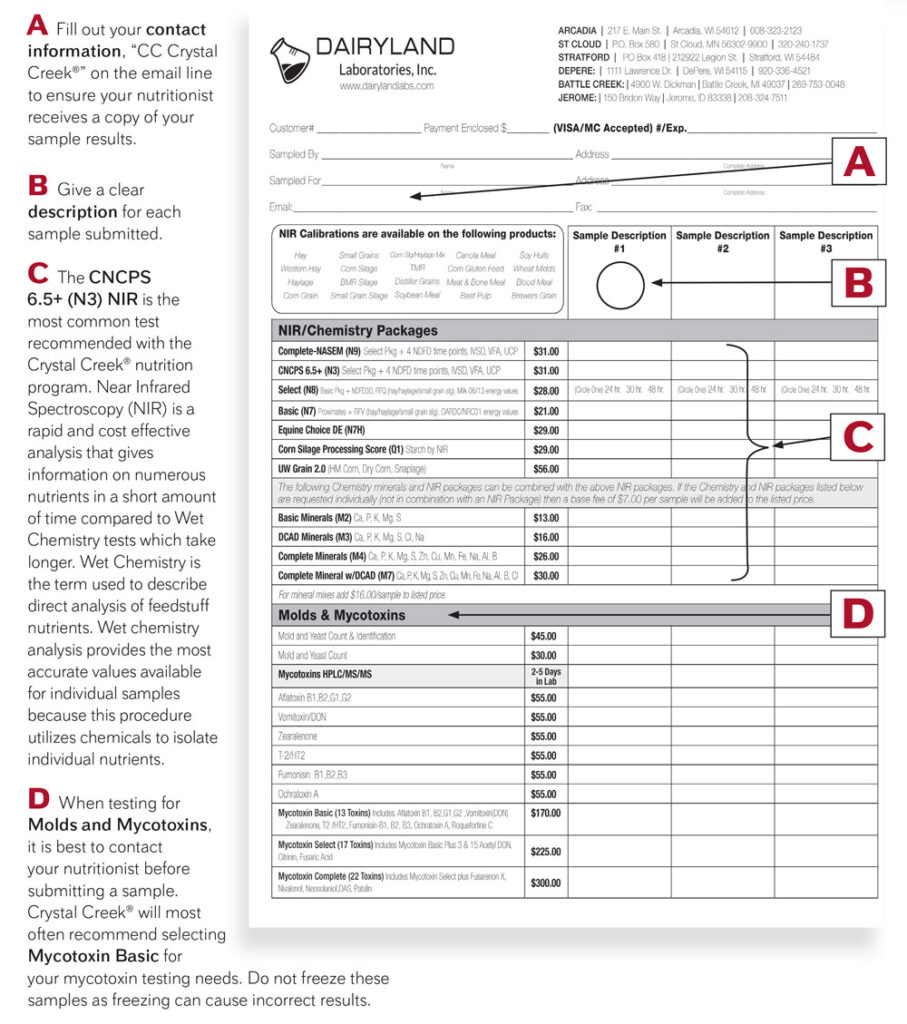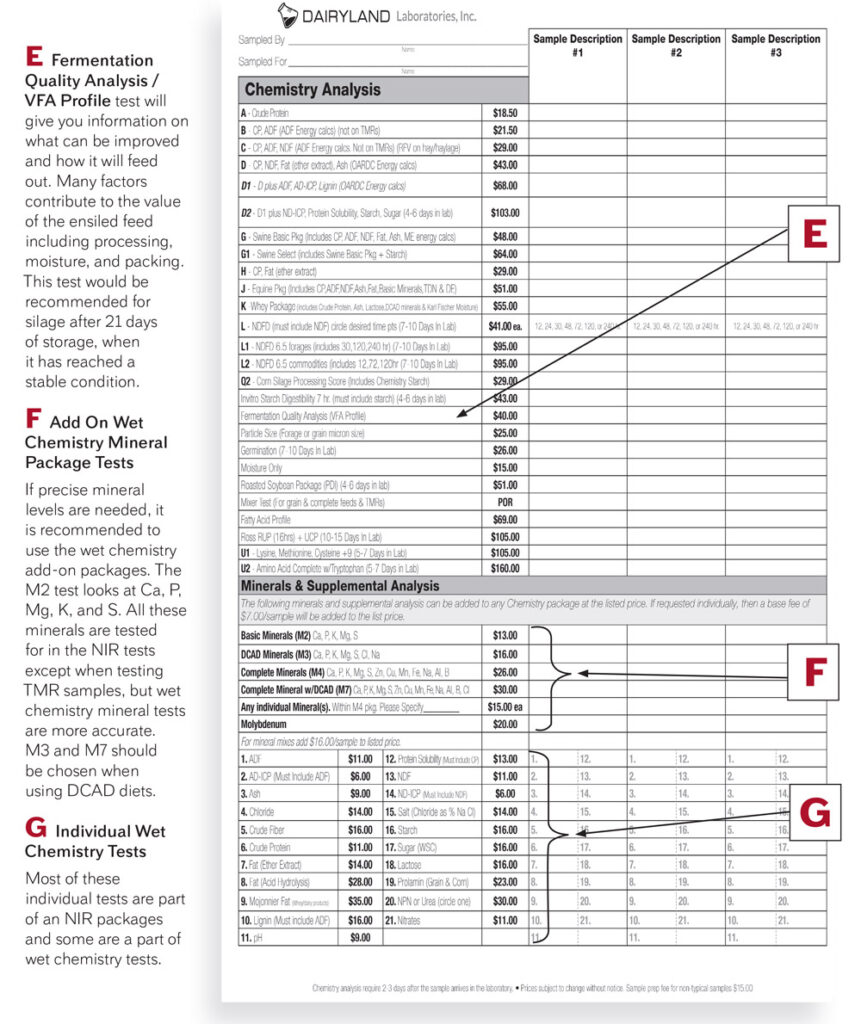Forage Sampling
Click here to view as a pdf: Forage Sampling Updated 2022
It is important to sample forages before adding them to a livestock diet. Sampling allows producers to have a balanced ration for their livestock and test for mycotoxins. It also gives farmers a snapshot into their agronomy, harvesting, and storage practices. The results of a forage sample will only be as good as the technique and effort that went into obtaining it.
Forage samples should be divided into different lots based on the variety, maturity, or field location(s). When sampling a lot, limit lot size to 200 tons or less. If a lot is greater than 200 tons, take two samples. The sample should then be quarter sampled. To quarter sample, put each sample into a bucket, mix the feed samples in the bucket thoroughly, and lay the mixed sample out in a pile. Flatten the pile and then divide into quarters. Take two-quarters of the pile, mix it together and place it in a sample bag to send to the lab. The final sample size should be one pint to one quart.
How To Quarter Sample
Different Forage And Storage Types Require Different Sampling Methods
Bales And Bagged Haylage: Core Sampler
- Use a core sampler to take samples from dry hay bales, baleage, and silage bags.
- Avoid using a handful of hay grabbed from the bale. This will be a poor representation of the lot. Small squares should have about 20 cores taken per lot ² and large bales should have 12 cores¹. Place samples into a forage sample bag.
- Taking cores from bagged haylage and silage is fairly easy. Take 8-10 cores from different spots of the lot. Tape over the hole when done². Place samples into a forage sample bag.
Silos, Bunkers And TMR: Scoops Or Handfuls
- Collect scoops or handfuls of forage from silos, bunkers, TMR mixers, and bags. Your hand should be in an up-facing position, much like a scoop. Do not shake the sample when sampling, as it will cause the fines to fall out of the sample. Scoop with your hand or scoop and place the sample in a bucket.
- When sampling from bags, take 5-6 handfuls/scoops of feed. After taking the first set of samples, remove feed for the next feeding and take another 5-6 handfuls/scoops. Mix all samples together in a bucket and quarter the sample.
- When sampling from a silo allow silage to ferment for 3 weeks and don’t take a sample from the top 3 feet. Run the silo unloader and collect 14 random handfuls/scoops¹. Put these samples into a bucket and quarter sample.
- When sampling from a bunker do not pull handfuls out from the face of the pile. This is dangerous. Use a facer or loader bucket to remove silage and place it into a pile. Take 10 handfuls, place the samples into a bucket, and quarter.
- When sampling from a TMR there can be a lot of variances. When feeding out, take samples from the beginning, middle, and end of the bunk. Taking samples from various parts of the feed bunk is best to get an accurate analysis. Mix samples together in the bucket and quarter.
After the samples are taken and prepared, the next step is to remove as much air as possible before sealing the bag. Silages can continue to ferment after a sample is taken. If possible it is best to vacuum seal these samples. If a sample will not be mailed right away it is okay to freeze the sample unless you are testing for molds and mycotoxins. Do not freeze samples for molds and mycotoxin tests.
1 https://www.dairylandlabs.com/feed-and-forage/submit-a-sample/sampling-tips/conventional-analyses
2 https://u.osu.edu/beef/2014/12/10/forage-and-feed-sampling/



